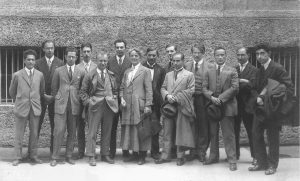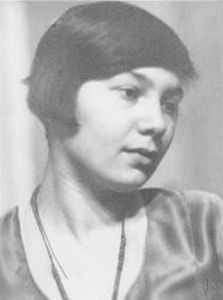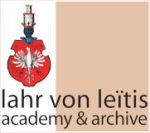April 29, 2024, Berlin: Innovators in Exile


Monday, April 29, 2024 at 7.00 pm
Austrian Cultural Forum
Stauffenbergstraße 1 | 10785 Berlin | Germany
Innovators in Exile
Rare Works by Ostracized Composers
Under the patronage of Thomas Hampson
In 1922, composers from all over the world founded the International Society for New Music in Salzburg. This courageous departure into the modern age was soon torpedoed. Arch-conservative critics reviled the artists gathered there as “musical Bolsheviks”. When the National Socialists came to power, eight of the founding members were forced to leave their German and Austrian homelands. Egon Wellesz fled to England after the “Anschluss” of Austria in 1938. The remaining seven composers – Wilhelm Grosz, Paul Hindemith, Hugo Kauder, Egon Lustgarten, Paul Pisk, Rudolf Reti and Karl Weigl – found refuge in the USA. They struggled to survive in a foreign environment and culture, but remained extremely creative. Some paved a new path to success, others died unnoticed and penniless. Apart from Paul Hindemith and Egon Wellesz, the other composers are almost completely forgotten today. Pioneers in Exile puts these little-noticed composers in the spotlight after decades of neglect. The eight men are joined by the completely forgotten composer Charlotte Schlesinger, a student of Franz Schreker and Paul Hindemith, whose string quartet won the Beethoven scholarship from the city of Berlin in 1929. She emigrated to America via Prague and Kiev. Discovered in archives and libraries and previously only performed in New York, the Pioneers in Exile project offers German audiences the unique opportunity to experience this previously unheard music live.
String quartets, songs and piano pieces by Wilhelm Grosz, Paul Hindemith, Hugo Kauder, Egon Lustgarten, Paul Pisk, Rudolf Reti, Karl Weigl, Egon Wellesz, and Charlotte Schlesinger
Performers:
Diplomatic Quartet: Matthias Hummel, 1st violin, Felix Klein, 2nd violin, Waltraut Elvers, viola, Gabriella Strümpel, violoncello
Gottlieb Wallisch, piano
Alexis Rodda, soprano
Introduction: Dr. Albrecht Dümling
Concept: Michael Lahr von Leïtis
Presented by the Austrian Cultural Forum Berlin in cooperation with Elysium – between two continents, The Leo Baeck Institute New York │ Berlin, Musica Reanimata, and The Lahr von Leitis Academy & Archive
Admission: Free
Reservations are required and can be made here.
May 2, 2024, Munich: Innovators in Exile


Thursday, May 2, 2024 at 7.30 pm
Münchner Künstlerhaus
Festival Hall
Lenbachplatz 8 | 80333 Munich | Germany
Innovators in Exile
Rare Works by Ostracized Composers
Under the patronage of Thomas Hampson
In 1922, composers from all over the world founded the International Society for New Music in Salzburg. This courageous departure into the modern age was soon torpedoed. Arch-conservative critics reviled the artists gathered there as “musical Bolsheviks”. When the National Socialists came to power, eight of the founding members were forced to leave their German and Austrian homelands. Egon Wellesz fled to England after the “Anschluss” of Austria in 1938. The remaining seven composers – Wilhelm Grosz, Paul Hindemith, Hugo Kauder, Egon Lustgarten, Paul Pisk, Rudolf Reti and Karl Weigl – found refuge in the USA. They struggled to survive in a foreign environment and culture, but remained extremely creative. Some paved a new path to success, others died unnoticed and penniless. Apart from Paul Hindemith and Egon Wellesz, the other composers are almost completely forgotten today. Pioneers in Exile puts these little-noticed composers in the spotlight after decades of neglect. The eight men are joined by the completely forgotten composer Charlotte Schlesinger, a student of Franz Schreker and Paul Hindemith, whose string quartet won the Beethoven scholarship from the city of Berlin in 1929. She emigrated to America via Prague and Kiev. Discovered in archives and libraries and previously only performed in New York, the Pioneers in Exile project offers German audiences the unique opportunity to experience this previously unheard music live.
String quartets, songs and piano pieces by Wilhelm Grosz, Paul Hindemith, Hugo Kauder, Egon Lustgarten, Paul Pisk, Rudolf Reti, Karl Weigl, Egon Wellesz, and Charlotte Schlesinger
Performers:
Diplomatic Quartet: Matthias Hummel, 1st violin, Felix Klein, 2nd violin, Waltraut Elvers, viola, Gabriella Strümpel, violoncello
Gottlieb Wallisch, piano
Alexis Rodda, soprano
Concept & introduction: Michael Lahr von Leïtis
Presented by the Münchner Künstlerhaus in cooperation with Elysium – between two continents, The Leo Baeck Institute New York │ Berlin, and The Lahr von Leitis Academy & Archive
Admission: € 30,- (€ 20,- reduced for students, senior citizens, and handicapped people)
Reservations are required and can be made here.
May 6, 2024, Frankfurt: Innovators in Exile


Monday, May 6, 2024 at 7.00 pm
Goethe University (Campus Westend)
President’s Building (Foyer)
Theodor-W.-Adorno-Platz | 60323 Frankfurt am Main | Germany
Innovators in Exile
Rare Works by Ostracized Composers
Under the patronage of Thomas Hampson
In 1922, composers from all over the world founded the International Society for New Music in Salzburg. This courageous departure into the modern age was soon torpedoed. Arch-conservative critics reviled the artists gathered there as “musical Bolsheviks”. When the National Socialists came to power, eight of the founding members were forced to leave their German and Austrian homelands. Egon Wellesz fled to England after the “Anschluss” of Austria in 1938. The remaining seven composers – Wilhelm Grosz, Paul Hindemith, Hugo Kauder, Egon Lustgarten, Paul Pisk, Rudolf Reti and Karl Weigl – found refuge in the USA. They struggled to survive in a foreign environment and culture, but remained extremely creative. Some paved a new path to success, others died unnoticed and penniless. Apart from Paul Hindemith and Egon Wellesz, the other composers are almost completely forgotten today. Pioneers in Exile puts these little-noticed composers in the spotlight after decades of neglect. The eight men are joined by the completely forgotten composer Charlotte Schlesinger, a student of Franz Schreker and Paul Hindemith, whose string quartet won the Beethoven scholarship from the city of Berlin in 1929. She emigrated to America via Prague and Kiev. Discovered in archives and libraries and previously only performed in New York, the Pioneers in Exile project offers German audiences the unique opportunity to experience this previously unheard music live.
String quartets, songs and piano pieces by Wilhelm Grosz, Paul Hindemith, Hugo Kauder, Egon Lustgarten, Paul Pisk, Rudolf Reti, Karl Weigl, Egon Wellesz, and Charlotte Schlesinger
Performers:
Diplomatic Quartet: Matthias Hummel, 1st violin, Felix Klein, 2nd violin, Waltraut Elvers, viola, Gabriella Strümpel, violoncello
Gottlieb Wallisch, piano
Alexis Rodda, soprano
Concept & introduction: Michael Lahr von Leïtis
Presented by the Buber-Rosenzweig-Institute, Dynamiken des Religiösen, in cooperation with Elysium – between two continents, The Leo Baeck Institute New York │ Berlin, and The Lahr von Leitis Academy & Archive
Admission: Free
Reservations are required and can be made here.






